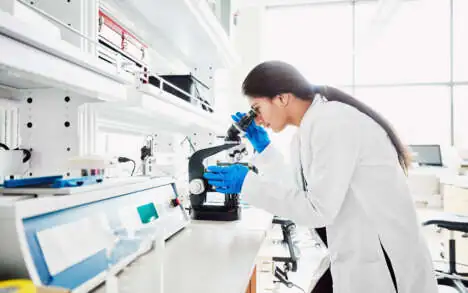The pharmaceutical industry is continually evolving, driven by advancements in technology, changing regulatory landscapes, and shifting consumer demands. Within this dynamic environment, facility design, use of closed systems and barrier technologies play pivotal roles in processes that require aseptic processing or a level of contamination control ensuring the safety, efficacy, and quality of pharmaceutical products. Regulatory bodies, such as the US Food and Drug Administration (FDA)[1] and European Medicines Agency (EMA)[2] , are placing increased emphasis on ensuring the sterility of pharmaceutical products.
This has become even more apparent with the publication of the current version of EudraLex Volume 4 Annex 1 “Manufacture of Sterile Medicinal Products” where the industry is encouraged to embrace new technologies and innovations with the purpose of increasing the assurance of a safe medicinal product, reducing the risk to patients[2].
Regulators expect stricter adherence to aseptic processing and contamination control, requiring pharmaceutical companies to invest in the use of appropriate technologies, such as Restricted Access Barrier Systems (RABS), isolators and robotic systems. Extra awareness was created with publication of EudraLex Annex 1[2] and adoption of the document by other bodies like the Pharmaceutical Inspection Co-operation Scheme (PIC/S)[3] and World Health Organization (WHO)[4]
We have worked with a number of clients that were using a conventional Grade A/B design that are retrofitting their existing sterile filling lines to RABS. Operating a Grade A RABS with Grade B background gives flexibility to the process and is relatively cost efficient as existing equipment can be maintained. Sustainability considerations are becoming integral to pharmaceutical manufacturing practices, driving the adoption of eco-friendly isolator technologies[5]. As such, it is anticipated that manufacturers will adopt next-generation barrier technologies that offer superior sterility assurance and operational flexibility.
We have seen in our collaborations that the use of technologies such as gloveless robotic systems within aseptic filling are beginning to be adopted more frequently. Among the options available to industry are open-isolator settings where automated systems or robots reduce the need for glove handling by automating certain processes such as automated line start-up and line clearance at batch end, automated in-process weight checks and completion of environmental monitoring, to name a few. The optimal design is where robot technology fully replaces the need for operator intervention in a closed isolator setting. Some examples involve semi-automated filling of advanced therapy medicinal products (ATMPs) and gloveless filling of drug product, including automatic installation of the filling path. Use of rapid detection methods and real-time viable environmental monitoring using biofluorescent particle counters[6, 7] have been seen in combination with automated sample taking using robotics. More innovative technologies are expected to emerge over the coming years as technology evolves.
We are seeing single-use components gain traction due to their flexibility, cost-effectiveness, and reduced risk of cross-contamination, and we expect this shift toward single-use systems to accelerate in the next few years, driven by their inherent advantages in terms of operational efficiency and ease of implementation. As we have seen working with clients, among the benefits of single use technologies (SUTs) are that they save on costly and time-consuming validation and revalidation activities. The downside, we maintain, is that the manufacturer is more dependent on the relationship with the supplier of the SUT and therefore needs to trust and the assurance that the vendor has the capabilities to consistently supply the SUTs, and that the product is of consistent quality. Another consideration, is the impact on the environment when using disposable technology.
About the author:
Patrick Nieuwenhuizen is Director and Principal Consultant at PharmaLex and has more than 25 years of experience in the industry across a variety of platforms including Biologics, Sterile Fill Finish and Solid Oral Dose.
References:
- FDA Guidance for Industry: Sterile Drug Products Produced by Aseptic Processing — Current Good Manufacturing Practice (2004). Accessed through: https://www.fda.gov/regulatory-information/search-fda-guidance-documents/sterile-drug-products-produced-aseptic-processing-current-good-manufacturing-practice
- Annex 1: Manufacture of Sterile Products, European Commission, 2022. Accessed through: https://health.ec.europa.eu/document/download/e05af55b-38e9-42bf-8495-194bbf0b9262_en?filename=20220825_gmp-an1_en_0.pdf
- Pharmaceutical Inspection Co-operation Scheme PE 009-17 (2023): Guidance to Good manufacturing Practice for Medicinal Products Annexes. Accessed through: https://picscheme.org/docview/6608
- World Health Organization Annex 2: WHO good manufacturing practices for sterile pharmaceutical products (2023). Accessed through: https://cdn.who.int/media/docs/default-source/medicines/norms-and-standards/guidelines/production/trs1044-annex-2-gmp-for-sterile-pharmaceutical-products.pdf?sfvrsn=d924ed65_1&download=true
- Journal of Cleaner Production (2021): Sustainability framework for pharmaceutical manufacturing (PM): A review of research landscape and implementation barriers for circular economy transition. Accessed through: https://www.sciencedirect.com/science/article/abs/pii/S0959652620343092
- PDA Letter Monitor Viable Air with Single-Use, Real-Time Tech (2018): Recent Advancements Address Regulatory Requirements for Monitoring of Cleanrooms. Accessed through: https://www.pda.org/pda-letter-portal/home/full-article/monitor-viable-air-with-single-use-real-time-tech
- ISPE White Paper: Bio-Fluorescent Particle Counter (BFPC) Continuous Environmental Viable Particle Monitoring Strategy for Aseptic Filling (2023). Accessed through: https://ispe.org/pharmaceutical-engineering/white-papers/bio-fluorescent-particle-counter-bfpc-continuous-environmental-viable








